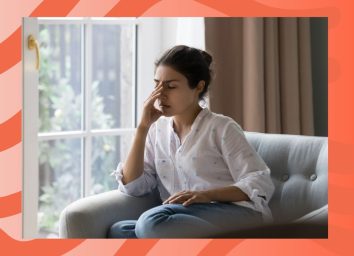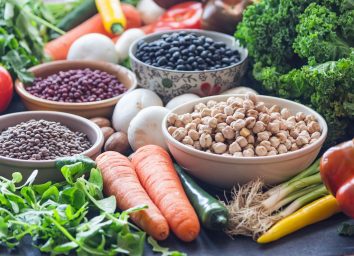Surprising Side Effects of Not Getting Enough Iron, Say Experts
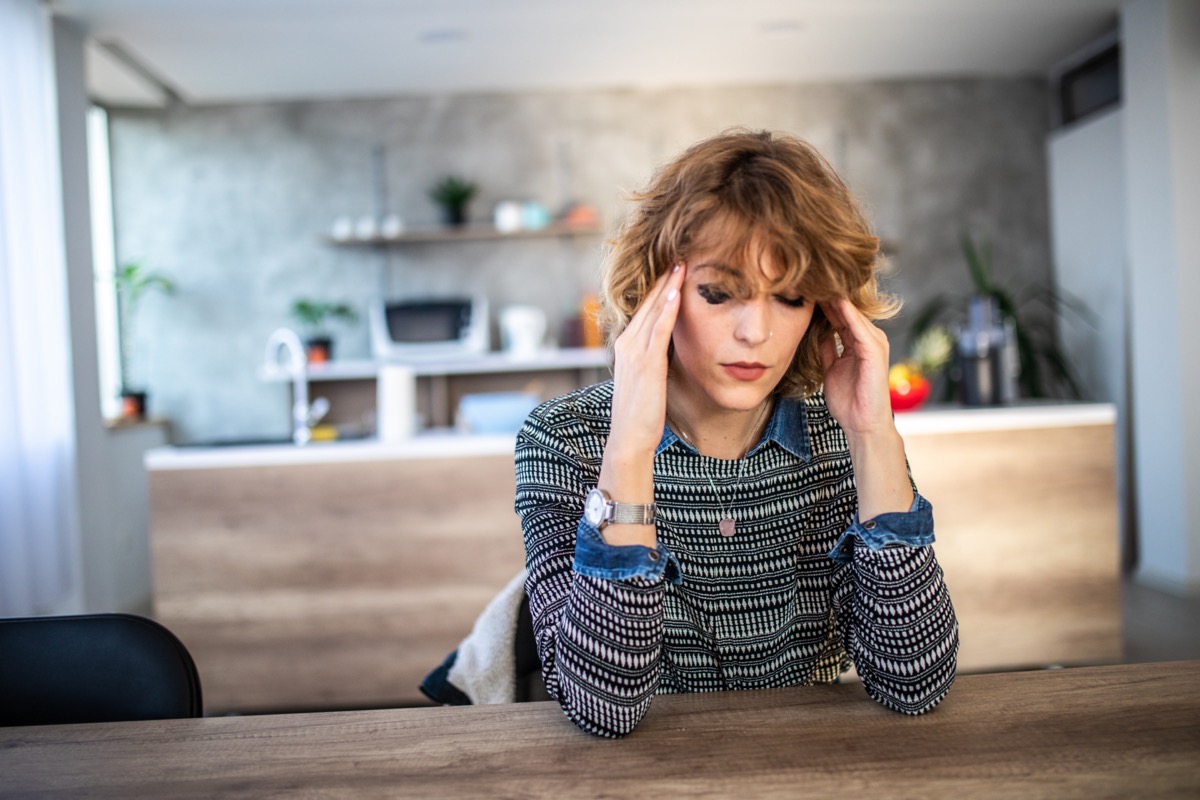
When it comes to getting all the proper vitamins and minerals into your diet, there always seem to be a few key nutrients people love to focus on. Vitamin C is a popular one, along with Vitamin D and fiber. While finding ways to incorporate these nutrients into your diet is good for your body, there are a few other nutrients you need to make sure you’re getting enough of. Iron is one of them, an important nutrient for your red blood cells. If you’re not getting enough in your diet, your body can experience some adverse side effects and even develop anemia—a condition where your body lacks enough healthy red blood cells, which is important for your body to take in oxygen.
“Iron deficiency is the most common nutrient deficiency worldwide,” says Trista Best, MPH, RD, LD with Balance One Supplements. “Iron deficiency is around 2% in males, 9% to 12% in non-hispanic white women, and roughly 20% in black and/or Mexican-American women. Those who eat a plant-based diet are also at risk of deficiency. The most absorbent form is heme iron which is found only in animal products.”
“It can also cause long-term health issues if left untreated,” Shannon Henry, RD for EZCare Clinic. “Without enough iron, your body will generate fewer RBCs or produce smaller RBCs than regular. This leads to an iron deficiency anemia which is related to insufficient intake from diets.”
If you’re not getting enough iron, you may experience one of the symptoms below. If that is the case, be sure to talk to your doctor about checking for deficiencies and ways you can increase your intake each week. Then, be sure to read The One Vitamin Doctors Are Urging Everyone to Take Right Now.
You’ll feel tired and sluggish.
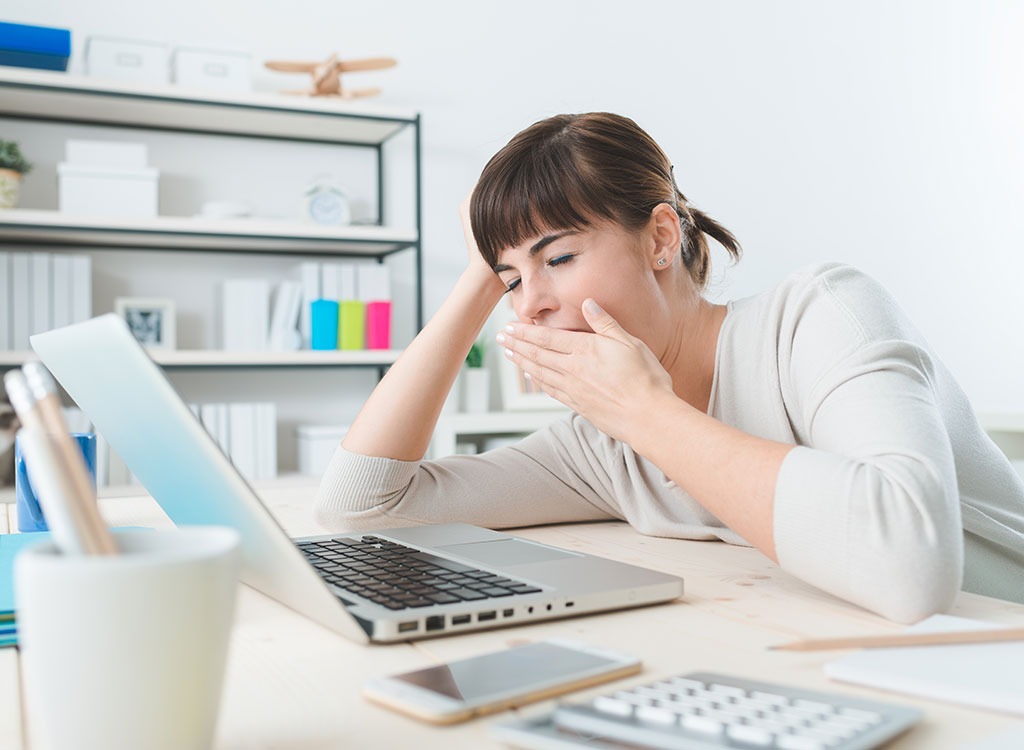
“Iron is needed for growth and development, oxygen transport in the body, as well as other purposes. If you don’t get enough iron, you may feel tired and lethargic,” says Jinan Banna, PhD, RD.
“Your body uses iron to transport oxygen to all parts of your body, so when you don’t have enough, you become tired and sluggish,” says Megan Byrd, RD, from The Oregon Dietitian.
Here are 6 Signs of an Iron Deficiency You Should Never Ignore.
You’ll have headaches.
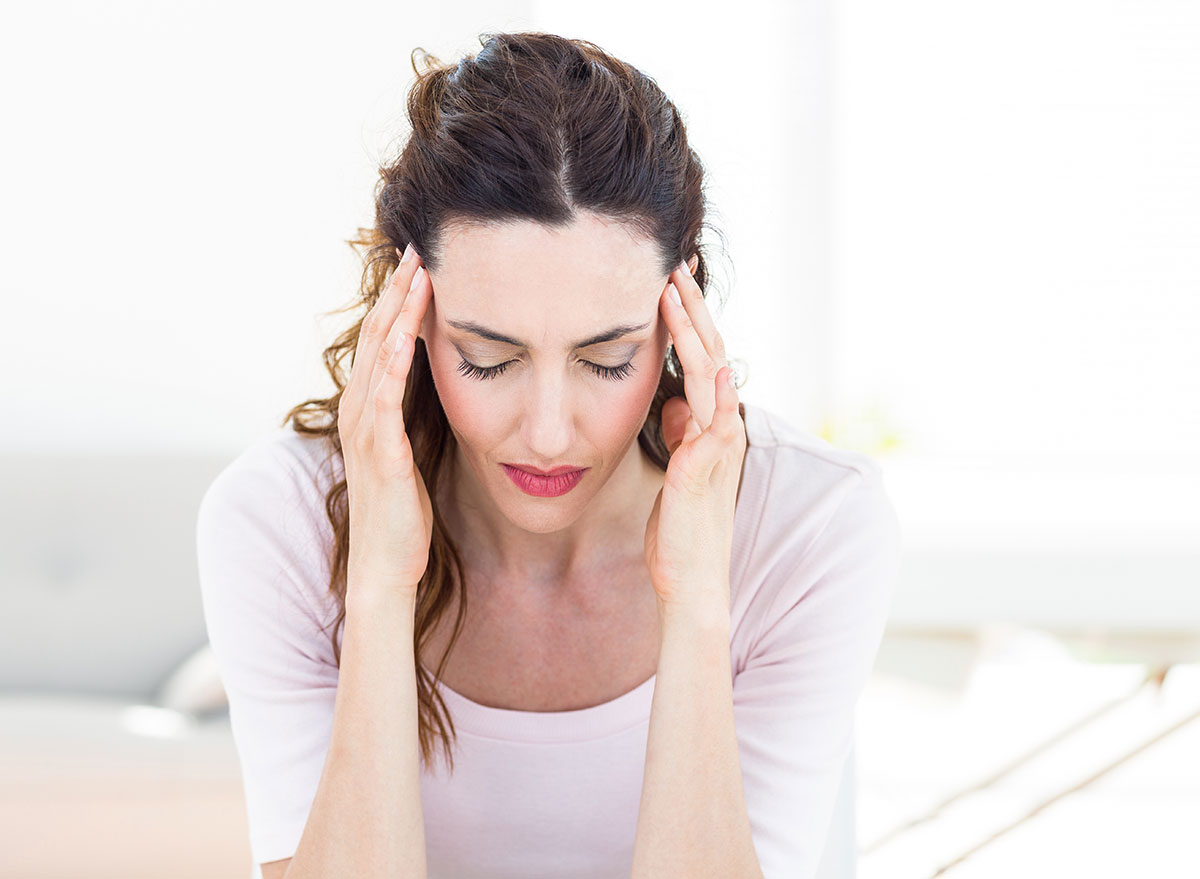
“Typically the first sign is fatigue and headaches,” says Dr. Rachel Paul PhD RD from CollegeNutritionist.com. “Iron, especially heme iron, is necessary for adequate levels of hemoglobin in your red blood cells.”
Related: Get even more healthy tips straight to your inbox by signing up for our newsletter!
Your muscles will feel weaker.

“For endurance athletes especially, getting enough iron is paramount,” says Sarah Schlichter, MPH, RDN of Bucket List Tummy, and co-host of the Nail Your Nutrition podcast. “Low iron stores can lead to impaired muscle function and limited aerobic capacity, and can impact performance and recovery as well.”
You’ll have cold hands and feet.
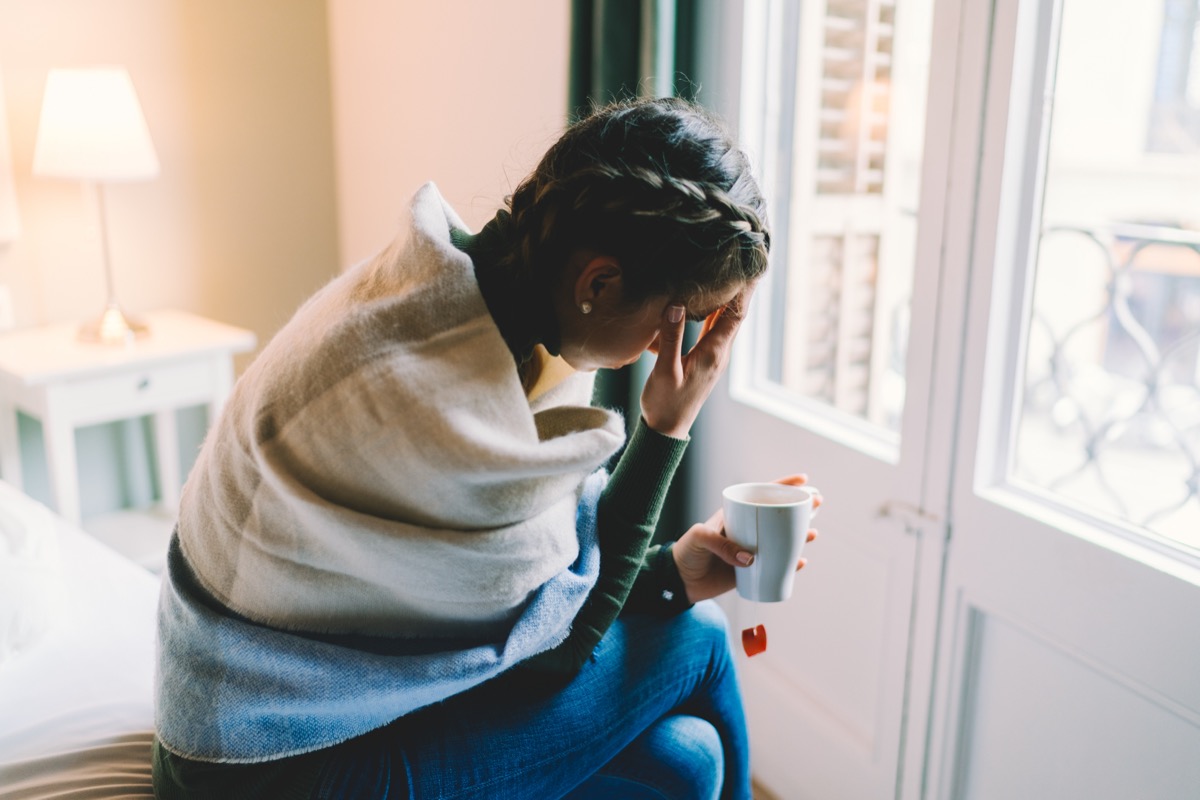
“Iron’s primary goal is to help take oxygen (via red blood cells) to your muscles, organs, and cells,” says Amy Goodson, MS, RD, CSSD, LD, author of The Sports Nutrition Playbook. “Without adequate intake, you could experience anemia, which can cause extreme fatigue, muscle weakness, shortness of breath, and cold hands and feet.”
You’ll feel dizzy.

“You may also have lightheadedness or become dizzy because your brain isn’t getting the oxygen it needs to function properly,” says Byrd. “Keep in mind that iron deficiency can often mimic other ailments, so it’s not always easy to self-diagnose. If you’re worried that you’re deficient, your doctor may need to do a lab draw.”
You may experience brittle nails and pale skin.
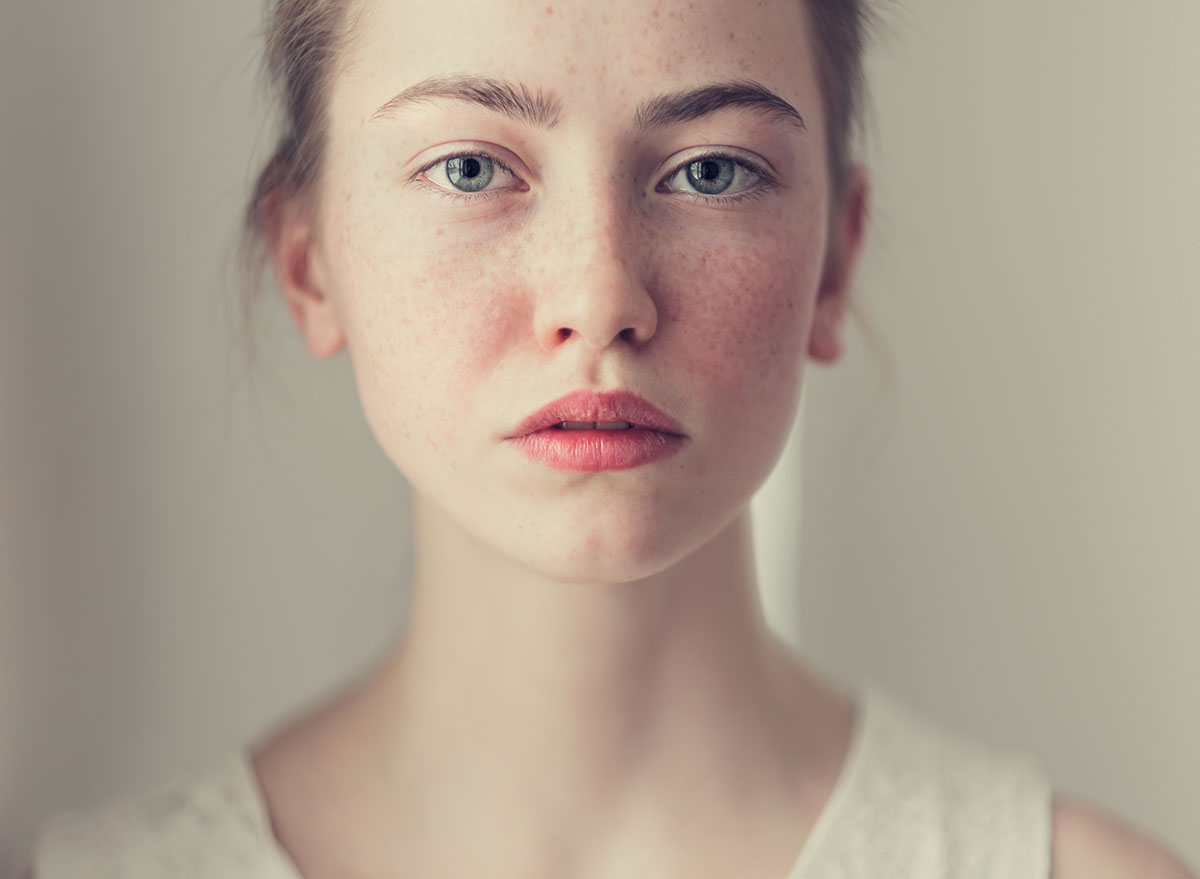
Goodson also points out that having brittle nails and pale skin can be another common side effect of not getting enough iron. This is your body’s response to anemia. Because of anemia, your nails could develop koilonychia, causing your nails to become brittle, according to Penn Medicine. The pale skin is due to the lack of hemoglobin in your red blood cells, which causes your skin to look paler.
How to get more iron in your diet.
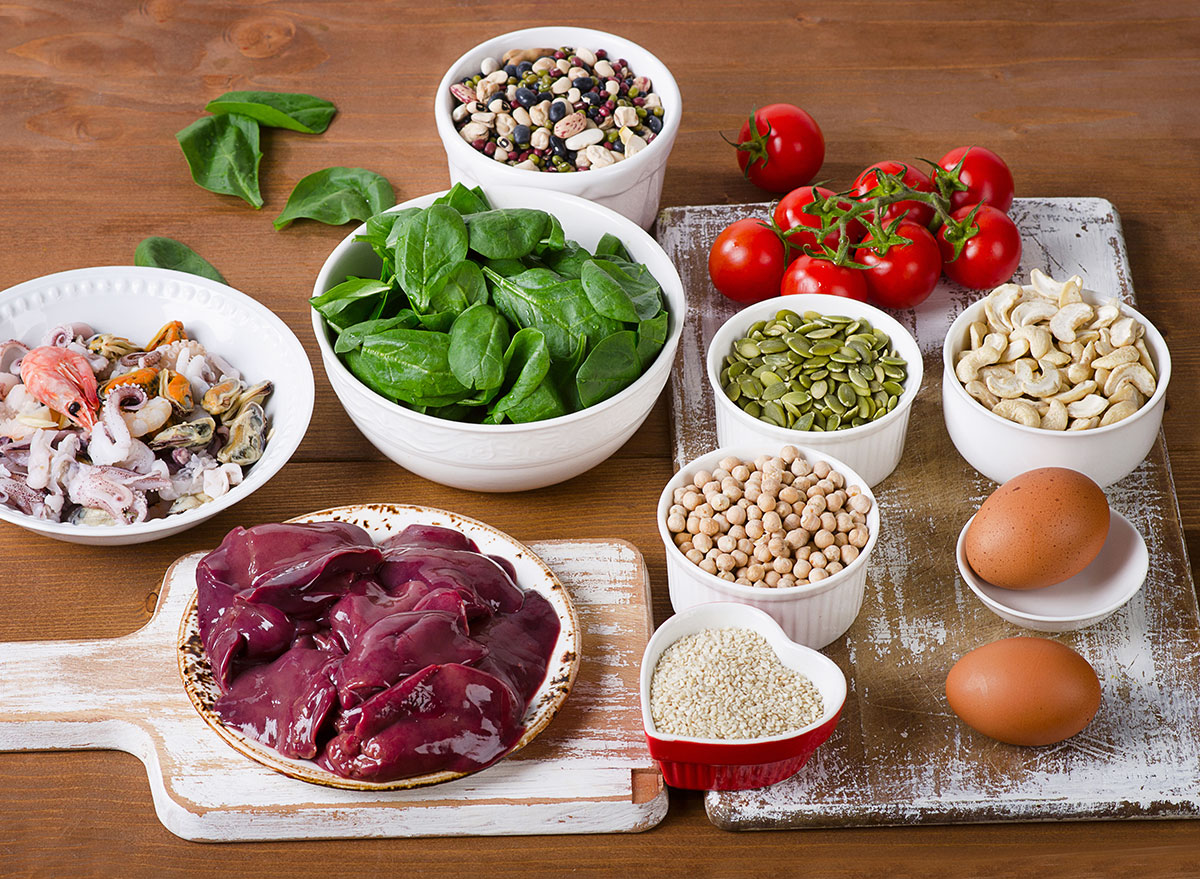
The best way to make sure you’re getting an adequate amount is by incorporating iron-rich foods into your diet.
Goodson points out that foods like beef, eggs, spinach, and beans are all great ways to add it into your eating plan. She also says that if you’re plant-based, look for consuming vitamin C-rich foods (citrus fruits, tomatoes and tomato sauces, red bell peppers, leafy greens) with a plant-based irom source (spinach, beans, legumes, nuts and seeds, soy foods, potatoes).
“[This] can help improve the absorption of plant-based iron,” says Goodson. “For instance, a salad with spinach, beans, nuts, red bell peppers, and tofu would be an ideal way to improve iron absorption from that meal.”
Here are The Best Iron-Rich Foods—And Why You Need Them in Your Life.
